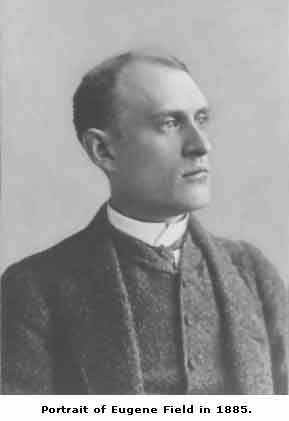Книга: Eugene Field «The Love Affairs Of A Bibliomaniac»

|
Серия: "-" Never, however, have I wholly ceased to regret the loss of the Elzevir, for an Elzevir is to me one of the most gladdening sights human eye can restupon. In his life of the elder Aldus, Renouard says: ""How few are there of those who esteem and pay so dearly for these pretty editions who know that the type that so much please them are the work of Francis Garamond, who cast them one hundred years before at Paris.""Книга представляет собой репринтное издание 1896 года (издательство" New York: C. Scribner's Sons" ). Несмотря на то, что была проведена серьезная работа по восстановлению первоначального качества издания, на некоторых страницах могут обнаружиться небольшие" огрехи" :помарки, кляксы и т. п. Издательство: "Книга по Требованию" (1896)
Купить за 1310 руб в My-shop |
Другие книги автора:
| Книга | Описание | Год | Цена | Тип книги |
|---|---|---|---|---|
| A Little Book Of Profitable Tales | But this treatment did the little oyster no good; and her parents made up their minds that they would send for another doctor, and one of a different school. Fortunately they were in a position to… — Книга по Требованию, - Подробнее... | бумажная книга |
Eugene Field
Infobox Person
name = Eugene Field, Sr.

image_size = 200px
caption = Eugene Field
birth_date = birth date|1850|9|2|mf=y
birth_place =
death_date = death date and age|1895|11|4|1850|9|2|mf=y
death_place =
occupation = American writer
spouse =
parents =
children =Eugene Field, Jr.
Eugene Field, Sr. (
Biography
Field was born in
Field attended
Field soon rose to become city editor of the "Gazette".
He became known for his light, humorous articles written in a gossipy style, some of which were reprinted by other newspapers around the country. It was during this time that he wrote the famous poem
From 1876 through 1880 Field lived in St. Louis, first as an editorial writer for the "Morning Journal" and subsequently for the "Times-Journal". After a brief stint as managing editor of the "
In 1883 Field moved to Chicago where he wrote a humorous
He first started publishing
(1939). "Illinois: A Descriptive and Historical Guide". A.C. McClurg & Co., p. 413.] although his 1901 biography by S. Thompson states that he was originally buried in Graceland Cemetery in Chicago. [Thompson, Slason (1901). "Eugene Field: A Study in Heredity and Contradictions". C. Scribner's Sons, p. 319.]
Several of his poems were set to music with commercial success. Many of his works were accompanied by paintings from
Field has his own star on the
Field has been credited with one of the most devastating witticisms in the history of dramatic criticism. Reviewing an actor named Creston Clarke in the title role of "King Lear", Field commented of Clarke's performance that he "played the king as if under the momentary apprehension that somebody else was about to play the ace".
:The Rock-a-By Lady
:The Rock-a-By Lady from Hushaby Street:Comes stealing; comes creeping;:The poppies they hang from her head to her feet:And each hath a dream that is tiny and fleet -:She bringeth her poppies to you, my sweet,:When she findeth you sleeping!
:There is one little dream of a beautiful drum - :“Rub-a-dub!” it goeth;:There is one little dream of a big sugar-plum,:And lo! thick and fast the other dreams come:Of pop guns that band, and tin tops that hum,:And a trumpet that bloweth!
:And dollies peep out of those wee little dreams:With laughter and singing;:And boats go afloating on silvery streams,:and the stars peek-a-boo with their own misty gleams,:And up, up, and up where the Mother Moon beams:The fairies go winging!
:Would you dream all these dreams that are tiny and fleet?:They’ll come to you sleeping;:So shut the two eyes that are weary, my sweet,:For the Rock-a-By Lady from Hushaby Street,:With poppies that hang from her head to her feet,:Comes stealing; comes creeping.
ee also
*Nick Kenny
*
References
External links
* [http://www.mediainformatics.biz/kidsbook/duel.html The Duel] The fairy tale, lushly illustrated in [http://mediainformatics.biz/kidsbook The Colorful Story Book] of 1941.
*
* [http://www.compassrose.org/uptown/waller-lot-eugene-field.html Ballad of Waller Lot (Buena Park, Chicago)]
* [http://quiver.knox.edu/wynkenblynken "Wynken, Blynken, and Nod", Knox College's children's and young adult literary publication]
* [http://www.reelyredd.com/1001duel.htm "The Duel", aka The Gingham Dog and The Calico Cat] hear song version of the poem
*
* [http://books.google.com/books?id=godM3MmfCPwC&pg=PA84&dq=lincoln+park+zoo+field&lr=&as_brr=1&ei=8q3JR-euB5GgygSBkP2nCQ&sig=ll7C8RYYWam4naujpw9p9x8jUA8#PPA85,M1 "Chicago: A Photographic Portrait", by Don Brown. Twin Lights Publishers (2005).] Photograph of the "Dream Lady" sculpture.
* [http://www.hrc.utexas.edu/research/fa/lffield.html Eugene Field Collection] at the
Источник: Eugene Field
См. также в других словарях:
Eugene Field — (1885) … Deutsch Wikipedia
